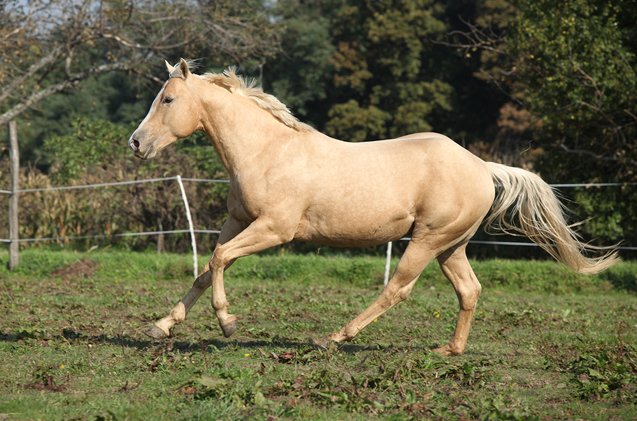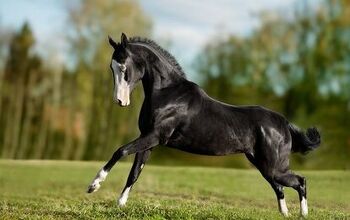Palomino Horse


About Palomino Horse
The actual birthplace of the Palomino Horse will likely never be known for certain. The characteristically golden horse with the tail and mane of an ivory hue has been mentioned in the legends of several different countries. The horse even appears in the ancient paintings and tapestries of Asia and Europe.
These horses also made history during the Crusades, and they were even highly favored by Spain’s famous Queen Isabella, who shipped a Palomino stallion, along with five mares, to Mexico. From there, these unique and beautiful horses spread into Texas and then into California. At that point in time, Native Americans began capturing the Palomino Horses in order to use them for warfare, transportation, and hunting.
Palomino horses are gentle, easy to train, and easy to work with in a variety of settings.
The name Palomino is actually a Spanish surname, and many horse experts believe that the Palomino is not really an equine breed on its own, but rather a color that can describe a horse, regardless of its breed. This is because the coloration known as Palomino is found in a variety of horse breeds.
However, the Golden Dorado, which was the Palomino of Spain, could be considered a breed that was a mix of Arabic, Moorish, and Spanish blood, much like the Moorish Barb and the Arabian horse breeds. In other words, a true Palomino Horse could actually be a descendent of that original Spanish stock of Moorish Barbs and Arabians after all, rather than just being a color.
Trigger and Mr. Ed are a couple of examples of modern Palomino horses that became stars on TV and in movies, proving that these horses are gentle, easy to train, and easy to work with in a variety of settings.
The Palomino Horse is most often described based upon its coat color, rather than as a breed of its own. Therefore, it is difficult to determine what traits these horses will showcase.
In other words, because Palomino Horses can actually be found within a variety of equine breeds, the temperaments and personalities can vary widely between these horses, and will ultimately depend upon the breed of an individual horse.
The Palomino Horse is most often described based upon its coat color, rather than as a breed of its own.
Generally, the Palomino Horse can perform a variety of tasks, thanks to its endurance, maneuverability, and versatility.
As mentioned above, when defining a Palomino simply by its color, the horse’s physique and physical description will vary, depending upon its actual breed, as the Palomino color can occur in several equine breeds.
To register a horse as a Palomino, it has to display a coat color that is similar to gold, though variations of three shades darker or lighter can also be accepted. The tail and the mane must also be nearly white or totally white, thereby creating a sharp contract.
The skin of a Palomino should be golden or dark in color, and these horses can also display white on the face if it is in the form of a star, snip, or blaze. If there is any white hair on the legs of the horse, it should not extend above the hocks and knees. White is not allowed anywhere else on the horse’s body, and the coat should also have a unique iridescence that shines.
The coloring of these beautiful horses is the result of what is known as the cream gene, or a cream dilution gene.
The coloring of these beautiful horses is the result of what is known as the cream gene, or a cream dilution gene. This gives the animal a chestnut base coat and a cream color.
The color can actually range from a creamy white to a darker brown. However, this horse breed will also showcase the characteristic white tail and mane that provides a beautiful contrast to the color on the rest of the body.
The grooming requirements for a Palomino Horse are the same as for any other horse breed. It is a good idea to groom your horse daily in order to bond with your animal and ensure that its coat will remain beautifully shiny and smooth, as well as clean of debris and loose hair.
To groom a Palomino, you can use a medium-bristle or a stiff-bristle body brush to remove all of the debris, dust, and dirt from the body. Then use a smaller, soft-bristled brush on the Palomino’s delicate face and legs, before utilizing a curry comb to remove excess dirt and loose hair that the first brush did not remove effectively enough. Just make sure to use the curry comb in a circular motion for the best results. Finally, to keep your Palomino’s beautiful tail and mane looking great, detangle the hair with your hands prior to brushing with the appropriate combs. Remove all rocks and debris from your horse’s hooves with a hoof pick.
Photo credit: Zuzule/Bigstock

Lisa Selvaggio is a freelance writer and editor, and our resident cats-pert, with certifications in pet nutrition and pet first aid. She enjoys producing content that helps people understand animals better so they can give their pets a safe and happy home.
More by Lisa Selvaggio

























